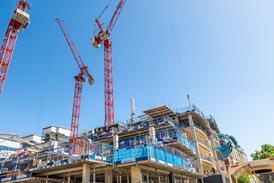Central to the Core Cities' role as drivers of regional economic growth is housing and over the next four pages we offer a snapshot of how the housing market is faring in these areas, comparing each against the other and against national figures
An increasing amount of research is being focused on the economic and social performance of England's cities. The latest extensive research was published earlier this month in the State of the English Cities report which examined performance across a range of measures. Housing, one of the key components of our cities, of course, plays a crucial role in the regeneration agenda to deliver sustainable communities. The snapshot statistics in this article provide an insight into the dynamics of the housing markets in the eight Core Cities.
The analysis shows that the average value of housing in the Core Cities is below the national average in all cases, with Nottingham having the lowest average value. This means that the ratio of average prices to earnings is less stretched than is the case nationally. However, if we were to dig beneath these headline numbers there are likely to be sub-markets where access to housing is limited.
While the supply of housing has expanded in all the Core Cities, in most cases at a rate above the national average, most new housing has been built in the city centres where land values are high and residential values tend to be well above average. Furthermore, the analysis of housing output by tenure highlights how the profile of new supply has been heavily skewed towards private housing, and that there has been little new affordable housing.
Large residential developments are one of the most obvious signs of the rapid regeneration of our cities and have helped bring life back to the city centres. While many local housing markets in the Core Cities have been rejuvenated in recent years, questions may be asked about what has happened to the existing housing in those cities? Much of the policy focus is on the delivery of new housing, but given the relatively low rates of housebuilding, it is vital we nurture existing local housing markets. The next phase of policy development for our cities needs to be focused on how housing markets operate at a local level and the impact that housing has on overall economic performance and social cohesion. Only then can policy support the growth and expansion of our Core Cities.
Manchester

The steady stream of apartment developments in Manchester continues apace. Among the latest crop is Manchester-based developer Dandara’s Chapel Wharf, designed by Sheppard Robson. The scheme comprises 1000 apartments, plus commercial space and has a gross development value of £199m. Chapel Wharf is one of five schemes under development or completed by Dandara.
Newcastle

George Wimpey’s regeneration of the Staiths South Bank site beside the river Tyne in Gateshead with 778 homes has caught masses of media attention because of the involvement of fashion designer Wayne Hemingway. Hemingway has worked with architect IDPartnership Northern on the scheme’s design.
Liverpool

Developers Ballymore and Merepark are awaiting a planning decision on their proposals to jointly develop land behind the city’s central underground station with a high-rise tower as part of the Central Village scheme. The £160m scheme, designed by architect Woods Bagot, will have 600,000 ft2 of space, including a hotel, apartments and retail.
Nottingham

Nottingham is a rapidly changing city, with several key projects in the pipeline including the £25m mixed retail leisure and hotel development, The Pod, designed by architect Benson + Forsythe, (shown above), and the £10m Lace Market Square 46-apartment residential and retail scheme, designed by architect Franklin Ellis. Both schemes are being undertaken by local developer Bildburn and are due for completion next year. Prices for apartments in Lace Market Square start at £125,000.
Bristol

The 360° building, the 104-apartment residential centrepiece of Crest Nicholson's Harbourside scheme is now clearly visible on the Bristol waterfront. The £360m Harbourside scheme, designed by Edward Cullinan Architects, is the biggest development in the city with about 1m ft2 of residential and commercial space. The site is due for completion in 2012.
Leeds

With 800 apartments, George Wimpey's Greenbank development is making a hefty contribution to the city’s housebuilding total. The 2.5 ha site also includes 30,000 ft2 of commercial space and a riverside promenade. This key project for the city was the subject of an international design competition, won by architect Assael Architecture with its design for a series of cascading buildings.
Sheffield

Urban Splash’s transformation of the iconic Park Hill flats is by no means the only large-scale residential scheme under way in Sheffield. City Lofts Group is building the city’s tallest building, a 31-storey mixed-use development with 322 studio, one and two-bedroom apartments and retail space, in Sheffield’s Heart of the City masterplan area. The City Lofts St Pauls scheme is designed by architect Conran and Partners.
Birmingham

In Birmingham’s Eastside the first 173-apartment block in the £350m Masshouse mega-development has been selling at a rate of nine units per week, and could sell out off plan. The 1.1m ft2 scheme is being carried out by Masshouse Developments, a joint venture of David McLean, Royal Bank of Scotland and Nikal. Apartments start at £149,995. As well as apartments and offices, the scheme will have a magistrates building, two public plazas and leisure and retail. Concept design of the scheme was by Edward Cullinan Architects.
Source
RegenerateLive
Postscript
By Richard Donnell, director of research, Hometrack























